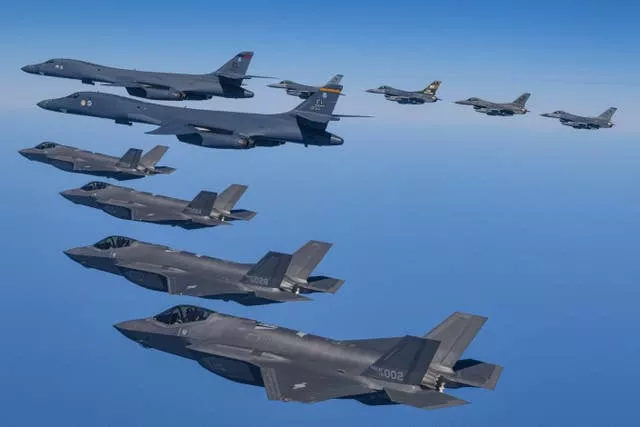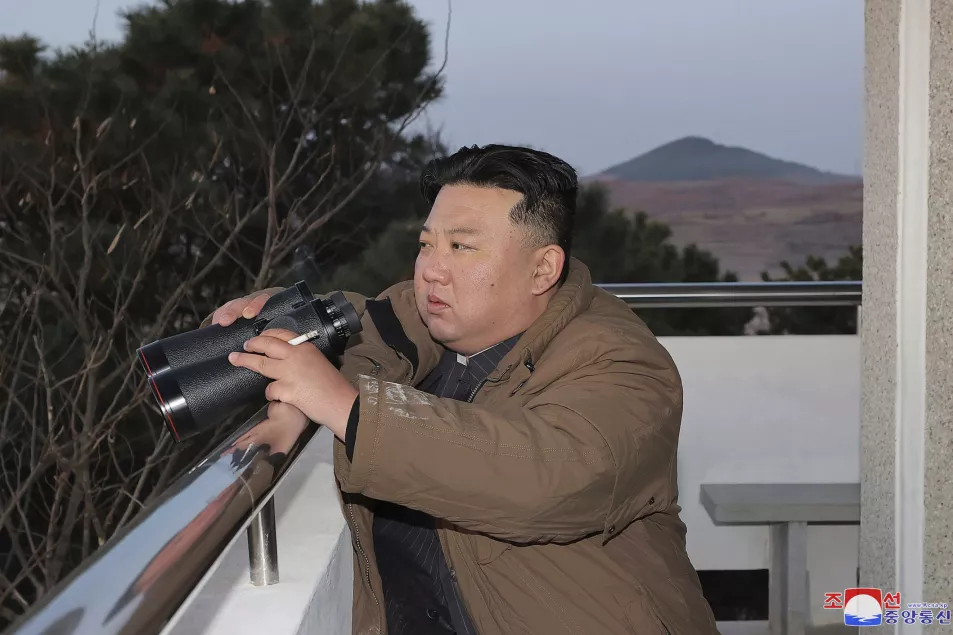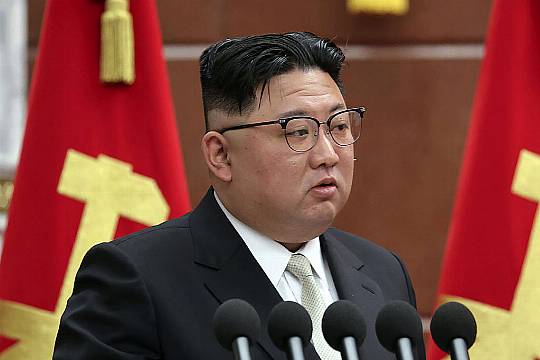North Korea has launched a short-range ballistic missile towards the sea, its neighbours said, ramping up testing activities in response to US-South Korean military drills that it views as an invasion rehearsal.
The North’s continuation of missile tests shows its determination not to back down, despite the US-South Korea drills, which are the biggest of their kind in years. But many experts say the tests are also part of a bigger objective to expand its weapons arsenal, win international recognition as a nuclear state and get international sanctions lifted.
The UN Security Council scheduled an emergency open meeting on Monday morning at the request of the United States, United Kingdom, Albania, Ecuador, France and Malta in response to North Korea’s previous ICBM launch on March 16.
The missile launched on Sunday from the north-west Tongchangri area and flew across the country before it landed in the water off its east coast, South Korea’s Joint Chiefs of Staff said in a statement.
It said it travelled a distance of about 500 miles – a range which suggests the weapon could target South Korea.

The chief nuclear envoys from South Korea, Japan and the US discussed the launch on the phone and strongly condemned it as a provocation that threatens peace on the Korean Peninsula and in the region. They agreed to strengthen their co-ordination to issue a firm international response to the North’s action, according to Seoul’s Foreign Ministry.
South Korea’s military said it will proceed with the rest of the joint drills with the US and maintain a readiness to “overwhelmingly” respond to any provocation by North Korea.
As part of the drills, the US on Sunday flew at least one long-range B-1B bomber for joint aerial training with South Korean warplanes, according to South Korea’s Defence Ministry.
North Korea is highly sensitive to the deployment of B-1Bs, which are capable of carrying a huge conventional weapons payload. It responded to the February flights of B-1Bs by test-launching missiles, whose ranges showed they can reach some military airbases in South Korea.
Japanese deputy defence minister Toshiro Ino said the missile fire on Sunday landed outside Japan’s exclusive economic zone and there were no reports of damage to vessels or aircraft in the area.

He called the launch “a threat” to the security of Japan, the region and the international community that “absolutely cannot be tolerated”.
He also said the missile likely showed an irregular trajectory – which could be a reference to North Korea’s highly manoeuvrable, nuclear-capable KN-23 missile.
The US Indo-Pacific Command said the launch does not pose an immediate threat to American territory or its allies, but highlights “the destabilising impact of its unlawful” weapons programmes and that the US security commitment to South Korea and Japan remains “ironclad”.
The launch was the North’s third round of weapons tests since the US and South Korean militaries began their joint drills last Monday. They are due to continue until Thursday.
The weapons North Korea has recently tested include its longest-range Hwasong-17 intercontinental ballistic missile designed to strike the US mainland.
North Korea’s state media quoted leader Kim Jong Un as saying that launch was meant to “strike fear into the enemies”.
According to South Korean media reports, the US and South Korea plan more training involving an American aircraft carrier later this month after their current exercises end.
This suggests animosities on the Korean Peninsula could last a few more weeks as North Korea would also likely respond to those drills with weapons tests.







